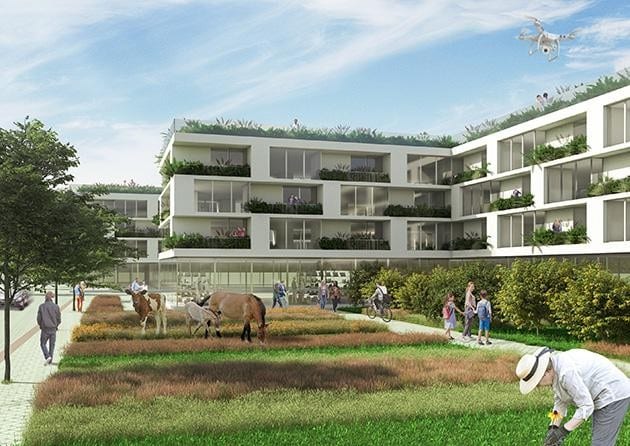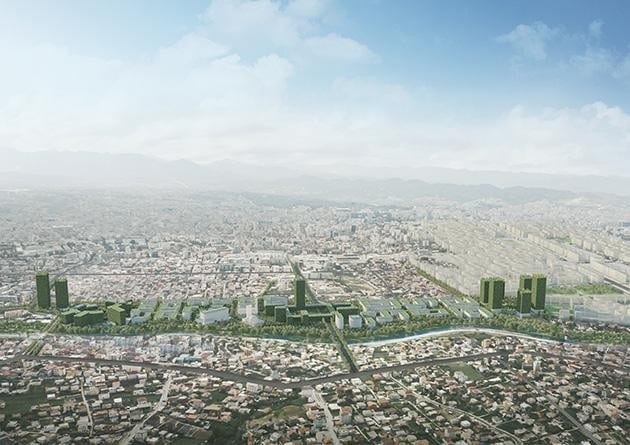The architecture studio’s Tirana Riverside project in Alabania is among the first to offer insight into what future developments will draw from the coronavirus outbreak.
Italian architecture studio Stefano Boeri Architetti has presented a new project concept to the Albanian Council of Ministers for a neighbourhood along the Tirana riverside in Albania. Working alongside the SON-Group, the development claims to be the first neighbourhood designed in agreement with Government and City Authorities that has the opportunity to respond to the needs of modern living for a post-COVID-19 world.
The core aims of the development are also sustainability requirements caused by the climate crisis, as well as a homelessness emergency in Albania caused by an earthquake on the 26th November 2019.

“It is no coincidence that Albania and Tirana are the first in Europe to accept the challenge of creating a Smart, eco-friendly and self-sufficient energy district in a few months that will be capable of responding not only to post-earthquake emergencies, but also satisfying post-Covid 19 health requirements and the needs dictated by the climate crisis. Tirana represents one of the most advanced areas in terms of urban and sustainable planning and we are happy to be able to contribute once more to planning its future” said Stefano Boeri.

The concept is for a walkable neighbourhood with a distribution of essential public services around three central locations, easily accessible for pedestrians from all areas of the neighbourhood – this includes retail, healthcare and education.
Eco-friendly and zero-emission, solar panels installed on roofs mean each building is part of a clean energy network, while the design also factors in ways to sustain the biodiversity of the riverside park location.The focus on exercise and wellbeing is echoed in an extensive network of rooftop gardens,

But how exactly has the large urban regeneration project, which would create housing for 12,000 people, adapted in the face of the coronavirus outbreak?
“The concept of a post-pandemic city accelerates the virtuous processes that would have occurred anyway,” explain Stefano Boeri and practice partner Francesca Cesa Bianchi. “We must consider the thresholds between the private sphere and the flows of the city as the first line of prevention, points of contact that become multiple garrisons on different scales and extension of the private life.
“We can imagine active ground floors for the reception of goods, with vending machines managed by operators in the agricultural-food sector or small health clinics for each neighbourhood; and the roofs not only as fifth facades for the reception of goods by drones, but as collective green spaces for art crafts, domestic agriculture, leisure and sport. The roofs, well connected among them, will become the equivalent in the near future of our residential courtyards: places of intense collective but not public life, generous but not codified, open air but not exposed.”
In a city, this breakdown into self-sufficient neighbourhoods can lower density in areas which would otherwise see high levels of aggregation, after all, it’s in many densely-populated cities where COVID-19 has claimed the most casualties.
The concept’s Masterplan sees opening of construction sites for the Tirana Riverside project this summer, with the first housing available within 12 months.

















